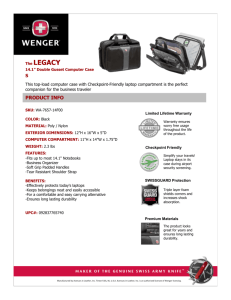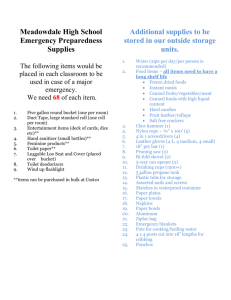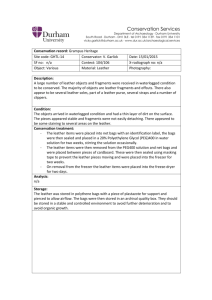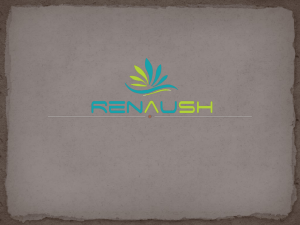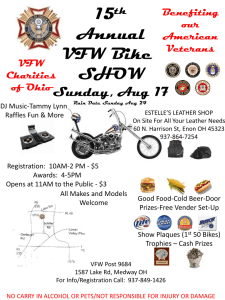You're Getting a Raise! CONGRATULATIONS
advertisement
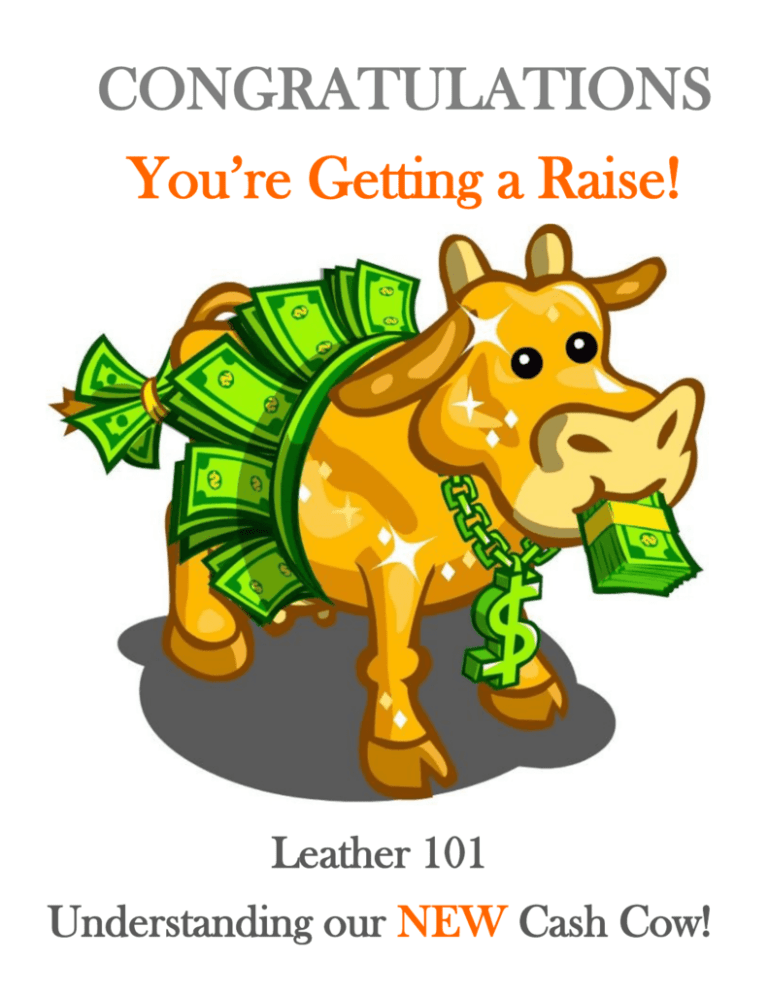
CONGRATULATIONS You’re Getting a Raise! Leather 101 Understanding our NEW Cash Cow! Understanding Costs -Only a small percentage of hides are used to make upholstery; this requires large sections of hides. High quality leather is expensive and this raw material cost represents a substantial percentage of total cost of manufacturing fine leather upholstery. -A majority of leather is used for making purses, shoes, wallets and luggage. -It is important that you understand the difference between the basic types of upholstery leather because the kind of leather used on an upholstery piece greatly affects its costs, durability, and beauty. -The cost is further exaggerated by the fact that 30% or more of each individual hide cannot be converted into usable upholstery panels. It usually takes 3 to 4 hides to make a reclining sofa. Surface Grain As part of the involved leather preparation process, suitable animal hides are split into a top layer (the one which had hair on it) and a thick lower layer. THE TOP LAYER: can either be processed into (1) full top grain leather (2) top grain (3) corrected & embossed grain. Full Grain Leather: Key word is “FULL” meaning 100% natural grain with the surface in tact. Full grain leather is considered to be of greater beauty and higher quality than corrected grain leather so commands a higher price. Top Grain Leather: Originally a full grain that has been altered through light sanding of the surface barely noticeable to the naked eye (slightly corrected). Corrected Leather: Leather that has surface imperfections will require correction. The reason why some top grain leather is corrected is to minimize the appearance of surface imperfections. This buffing/sanding process makes the leather more uniform. Natural looking patterned effects can be reintroduced by coating the leather with layers of pigment finish and embossing it under heat or high pressure. This process can smooth the grain or produce unique patterned effects. Grain correction or even the removal of the top grain of leather does not alter the leather strength when comparing equally thick samples. Ex: Think of Wood requires little Needs a to no little correction correction THE BOTTOM LAYER: is referred to as a “split”. -Split leather offers economy advantages. It usually does not have as good flex resistance which is the reason it is used in non-flexible areas such as sides and backs (usually in stationary). Special Effects Another difference in cost of leather are the special effects. The cost of these effects are in direct relationship to the expertise, components and the degree of difficulty to create these various looks. Costly Effects– Identifies those special effects that are associated with substantial additional expense such as: heavyweight thickness, hand rubbing or wiping, metallic finishes, or a combination of several techniques. Active Effects– Infusion of oil and/or waxes to create a color burst when stretching during the upholstery process. Mechanical Effects– Color or surface effects on leather created with automated techniques. Includes effects like spray savage, kela two toned, embossed prints, tipping and distressed. Uniform Color– Leather sprayed, rolled or dyed with a single color effect. Examples U895 U992 Hand Tipped 965 Embossed Hand Wiped Padded Sides & Backs U982/U989 leather pulls & inside power button Seat Pitch Added more support under knees & legs Upgraded Seating Layered cushioning with 2.0 density foam. Will sit a little firmer & will retain its shape longer. Webbed Seating Using webbed seat instead of Sinuous Coils, adding comfort. You sit into your seat, rather than on your seat. adding to the overall comfort of group Metal Cup holders in loveseats A Nicer Top Grain Leather that is 30% more expensive than current inline leather. It is a top grain leather, but has the thickness of a full grain leather. Extra processing has been used to achieve this soft luxurious feel. 60% of the cost of these frames is the leather. Leather Classifications Natural Markings These are natural NOT defects… This is what makes leather unique! Leather Facts Comfort: -Leather is a natural material; making it an ideal choice for comfort -Leather breathes; it has excellent temperature adaptation making it comfortable during the heat of summer and cool in the winter. Conformability: -Leather conforms to your body shape and becomes more comfortable with use. -Leather ages well. It will not wear like fabric covers. Instead, fine leather acquires a “patina” and may become more supple with age. Durability: -Leather has legendary tear strength, making it one of the strongest upholstery materials known to man. -It has high ripping resistance and is twice as strong as other upholstery materials, even along the seam lines. -It takes 400lbs of pressure to puncture leather. -On average leather last 5 times longer than fabric. -Modern leather will not crack or peel. It stretches and retains its shape without sagging. -Leather resists heat and sun damage. -Leather does not absorb dust, animal hair or odors like cigarette smoke. -Leather is an ideal choice for those who are dust sensitive or have allergies. Flame Resistance: -It is naturally fire resistant and will not readily burn or melt. It emits no toxic fumes, even when exposed to intense heat. Durablend Facts Durability: -Durablend is a fabric backed by leather and coated in polyurethane (industry average 17% leather) -Durablend is a texture option for cost conscious or microfiber customers. -Durablend doesn't retain odors or allergens and is considered a performance fabric.
